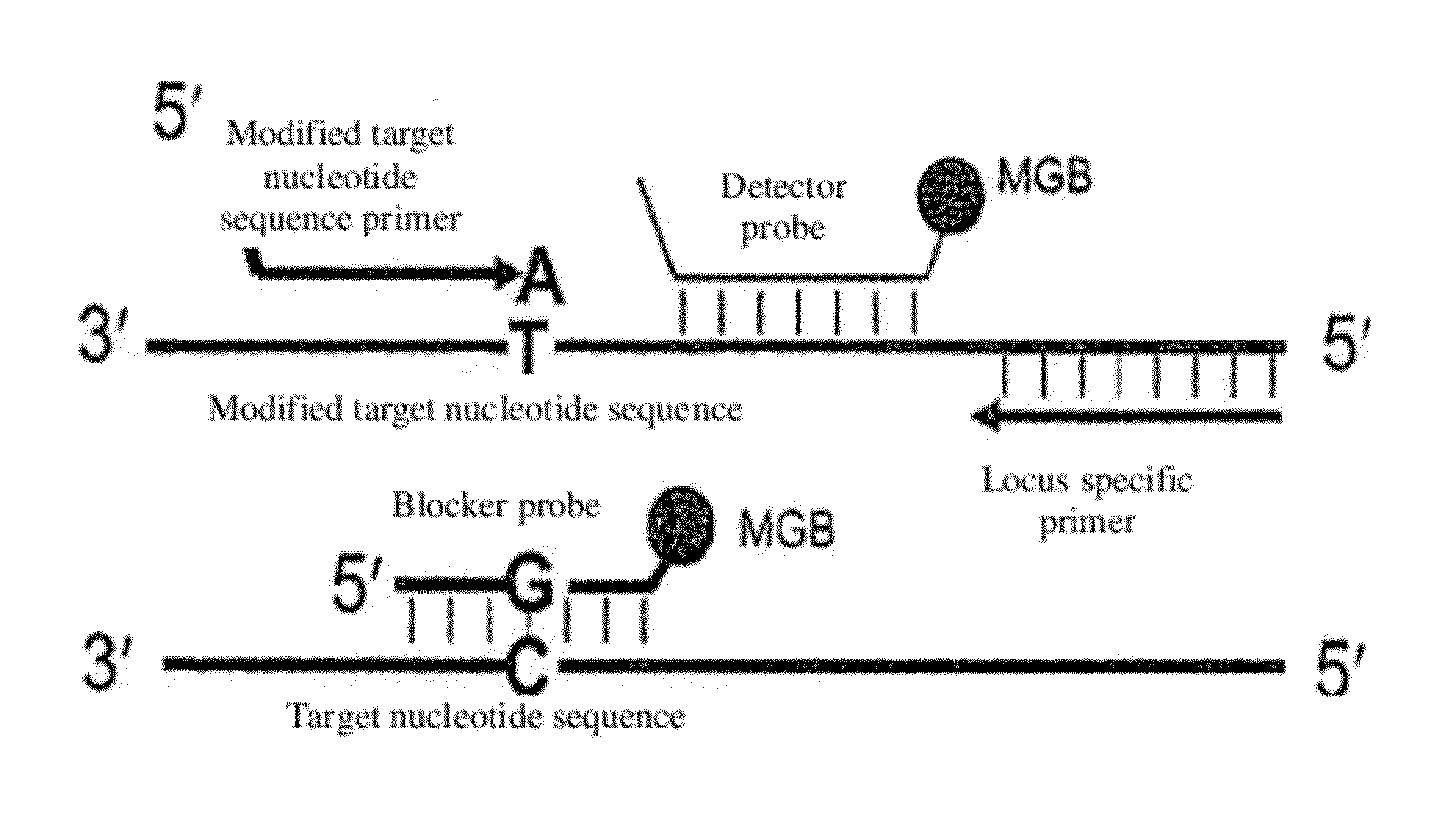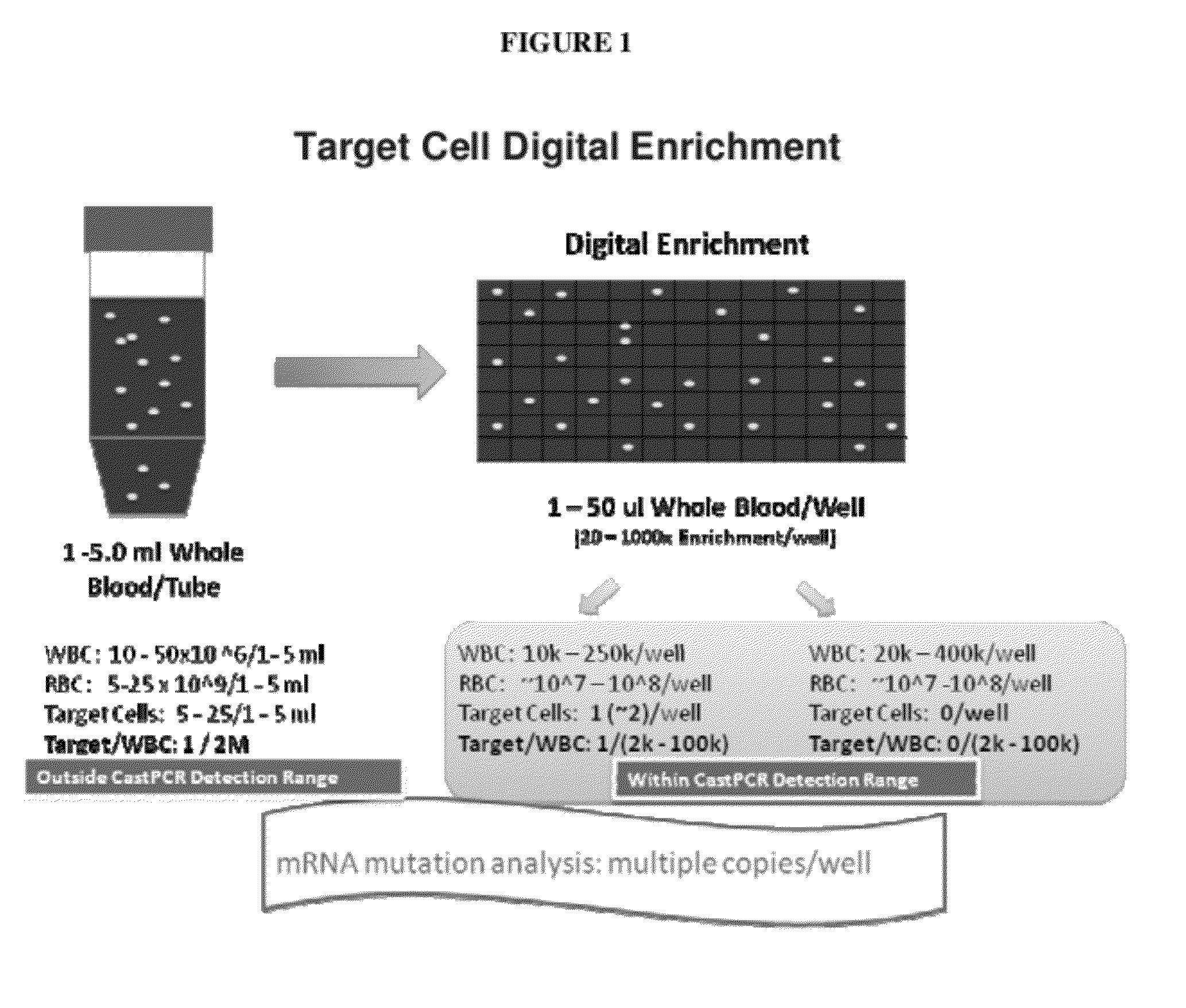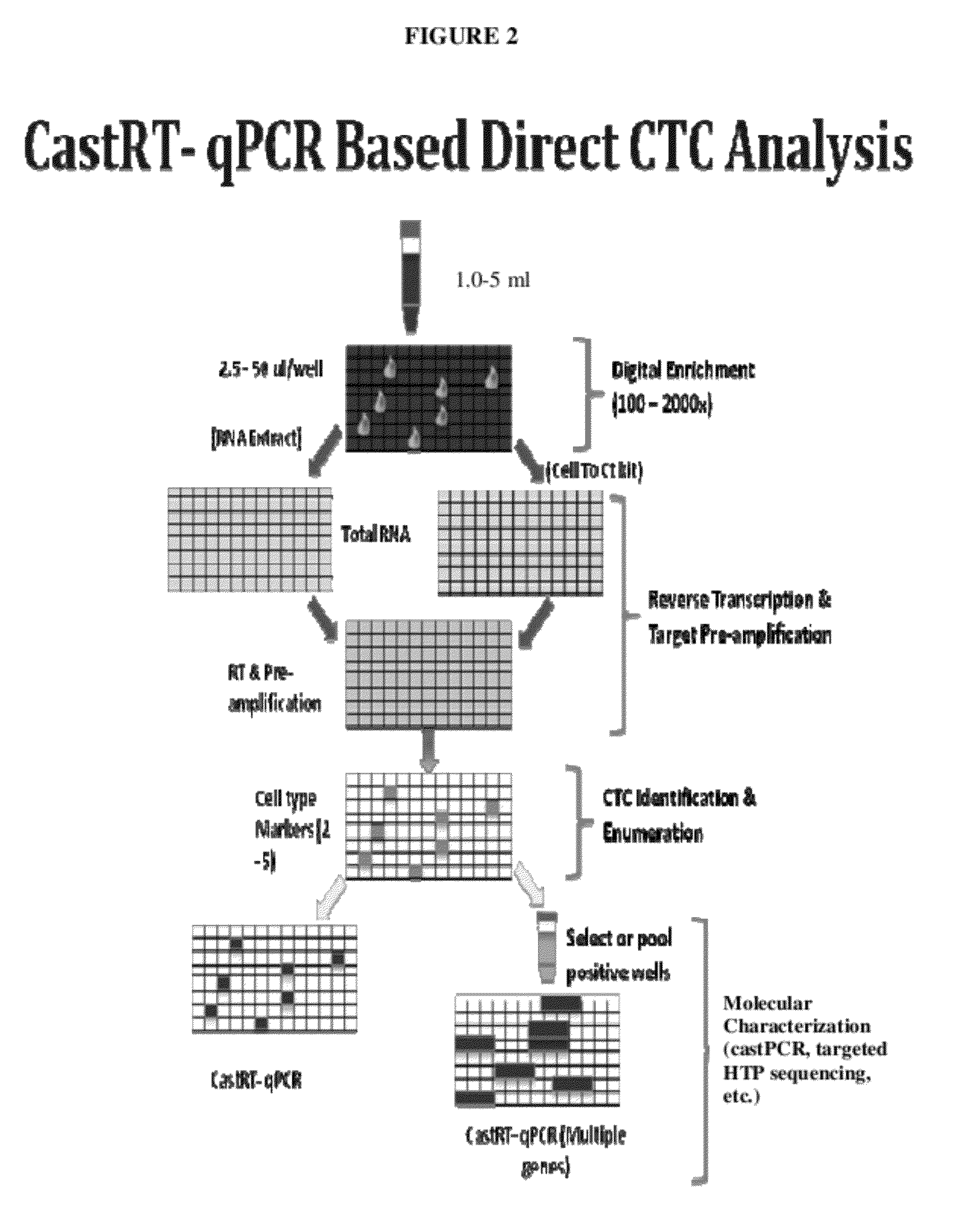Methods, compositions, and kits for detecting rare cells
- Summary
- Abstract
- Description
- Claims
- Application Information
AI Technical Summary
Benefits of technology
Problems solved by technology
Method used
Image
Examples
example 1
Materials and Methods
[0147]The general schemes for digital enrichment of target cells combined with sensitive detection assays, such as castPCR, that are used in the following examples are illustrated in FIGS. 1-4. For each SNP that was analyzed, allele-specific primers were designed to target a first allele (i.e. allele-1) and a second allele (i.e. allele-2). The castPCR assay reaction mixture for allele-1 analysis included a tailed allele-1-specific primer (ASP1), one MGB allele-2 blocker probe (MGB2), one common locus-specific TaqMan probe (LST) and one common locus-specific primer (LSP). The castPCR assay reaction mixture for analysis of allele-2 included a tailed allele-2-specific primer (ASP2), one MGB allele-1 blocker probe (MGB1), one common locus-specific TaqMan probe (LST) and one common locus-specific primer (LSP). All reactions were carried out essentially as described in US 2010 / 0221717 A1 (U.S. Ser. No. 12 / 641,321) and US 2010 / 0285478 A1 (U.S. Ser. No. 12 / 748,329). Add...
example 2
Detection of Model CTCs Spiked in to Whole Blood
[0148]As a proof of concept experiment, a small number of cells of a cancer cell line with a known genetic phenotype (e.g., a known mutation) were added into normal whole blood samples known not to contain mutated cells (e.g., the blood was “spiked” with model CTCs). The data indicate that RT castPCR may be used to detect and quantitate rare target cells in a biological sample.
[0149]The H460 lung cancer cell line is known to contain the KRAS mutation p.Q61H c.183A>T (castPCR Assay ID 555) (and to express the CK19 epithelial cell marker). To test the new methods described herein, H460 cells were “spiked” into normal blood samples. An estimated 25-50 cells (e.g., about 38 cells estimated) as quantitated using the Auto Cell Counter (Invitrogen) were added into 1 ml normal whole blood followed by distribution of 2.5 ul-50 ul aliquots into separate wells of a 96-well plate. Each well was estimated to contain a single model CTC (e.g., H460) ...
example 3
Detection of KRAS and EGFR Mutations in Cells from Spiked-in Blood Samples
[0153]In this example, H460 or H1975 cells were “spiked” into normal blood samples as described above for Example 2. Briefly, an estimated 20-60 cells (as indicated—see FIG. 10, column 4) as quantitated using the Auto Cell Counter (Invitrogen) were added into 1 ml normal whole blood followed by distribution of 5 or 10 μL aliquots (as indicated—see FIG. 10, column 2) were added to separate wells of a 96-well plate. Each well was estimated to contain a single model CTC (e.g., H460 or H1975) “target” cell in a background of non-target cells (e.g., 50-100×103 white blood cells / well). Total RNA was extracted by MagMAX-96 Blood RNA Isolation Kit from all the cells in each well according to the manufacturer's protocol. RNAs were reverse transcribed into cDNA using random primers. The extracted RNA was then directly used for mutation detection by castPCR.
[0154]The results of these experiments are illustrated by FIGS. ...
PUM
 Login to View More
Login to View More Abstract
Description
Claims
Application Information
 Login to View More
Login to View More - R&D
- Intellectual Property
- Life Sciences
- Materials
- Tech Scout
- Unparalleled Data Quality
- Higher Quality Content
- 60% Fewer Hallucinations
Browse by: Latest US Patents, China's latest patents, Technical Efficacy Thesaurus, Application Domain, Technology Topic, Popular Technical Reports.
© 2025 PatSnap. All rights reserved.Legal|Privacy policy|Modern Slavery Act Transparency Statement|Sitemap|About US| Contact US: help@patsnap.com



